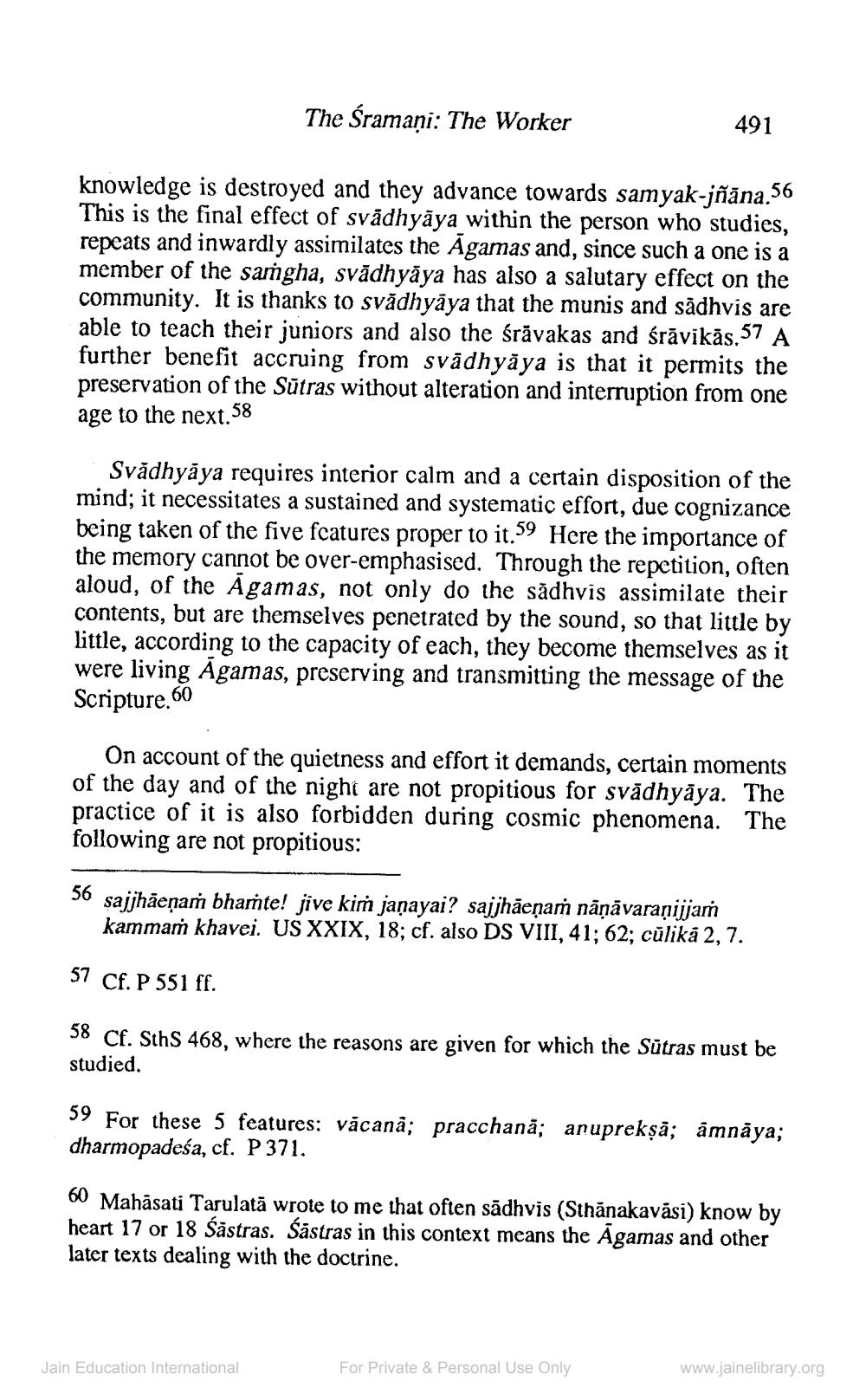________________
The śramaņi: The Worker
491
knowledge is destroyed and they advance towards samyak-jñāna. 56 This is the final effect of svādhyāya within the person who studies, repeats and inwardly assimilates the Agamas and, since such a one is a member of the samgha, svādhyāya has also a salutary effect on the community. It is thanks to svādhyāya that the munis and sadhvis are able to teach their juniors and also the śrāvakas and śrāvikās.57 A further benefit accruing from svādhyāya is that it permits the preservation of the Sūtras without alteration and interruption from one age to the next. 58
Svădhyāya requires interior calm and a certain disposition of the mind; it necessitates a sustained and systematic effort, due cognizance being taken of the five fcatures proper to it.59 Here the importance of the memory cannot be over-emphasised. Through the repetition, often aloud, of the Agamas, not only do the sădhvis assimilate their contents, but are themselves penetrated by the sound, so that little by little, according to the capacity of each, they become themselves as it were living Agamas, preserving and transmitting the message of the Scripture.60
On account of the quietness and effort it demands, certain moments of the day and of the night are not propitious for svādhyāya. The practice of it is also forbidden during cosmic phenomena. The following are not propitious:
56 sajjhāeņaṁ bhamte! jive kim jaņayai? sajjhāenam nāņāvaranijjam
kammaṁ khavei. US XXIX, 18; cf. also DS VIII, 41; 62; cūlika 2,7.
57 Cf. P 551 ff.
58 Cf. Sths 468, where the reasons are given for which the Sütras must be studied.
59 For these 5 features: vacană; pracchanā; anuprekṣā; amnāya; dharmopadeśa, cf. P 371.
60 Mahāsati Tarulatā wrote to me that often sādhvis (Sthănakavasi) know by heart 17 or 18 Săstras. Šāstras in this context means the Agamas and other later texts dealing with the doctrine.
For Private & Personal Use Only
www.jainelibrary.org
Jain Education International




